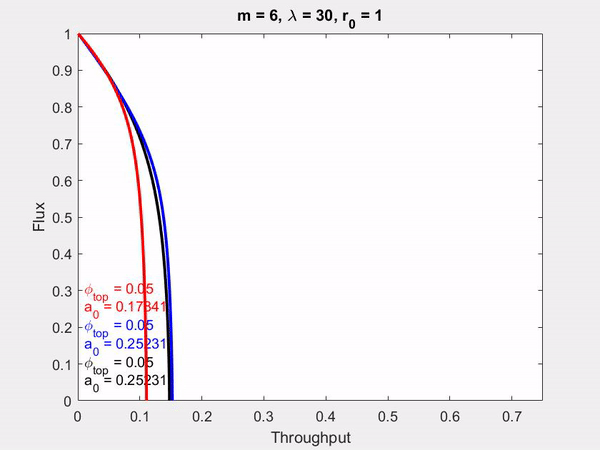Math 451, SPR 2018 - Effects of Membrane Morphology on Flow and Fouling: Modeling of Connected Branched Membrane Filters
Students: Dylan L. Renaud
NJIT,
Undergraduate, Department of Physics and Department of Mathematical Sciences
Instructors: Binan Gu, Pejman Sanaei, Linda Cummings, and Lou Kondic
NJIT, Department of Mathematical Sciences and the Center for Applied Mathematics and Statistics

In this work, we study the influence of a membrane's internal structure on its flow and fouling behaviour. This project stems from previous studies by Sanaei et al. (see [1-3]) on non-connected branched-pore membrane filters. We now extend components of these works to investigate the influence of intra-layer connections in membrane filters. Additionally, we present extensive results on the influence of membrane asymmetry on overall performance. For symmetric membranes, our results demonstrate that the relative performance of connected and non-connected membranes is strongly dependent on membrane morphology parameters (i.e. geometric coefficient and top layer porosity). Additionally, we show that the filtration efficiency can decrease with time depending on the membrane considered (i.e. two-inlet of single-inlet models) and again, choice of morphology parameters. For asymmetric membranes, results show that membrance total throughput monotonically increases with increasing degree of asymmetry for all membrane types.

Figure 1: Illustration of three different membranes considered. (a) Two-inlet connected membrane. (b) Single-inlet connected membrane. (c) Non-connected membrane.

Figure 2: Flux versus throughput for two-inlet connected (red), single-inlet connected (blue) and non-connected (black) membrane filters.
Simulations shown are for m=6 layer structures with initial resistance r=1 and equivalent top-layer porosity
.
[2] P. Sanaei, L.J Cummings, Journal of Fluid Mechanics, 818, 744-771 (2017).
[3] P. Sanaei, G.W. Richardson, T. Witelski, L.J Cummings, Journal of Fluid Mechanics, 795, 36-59 (2016).